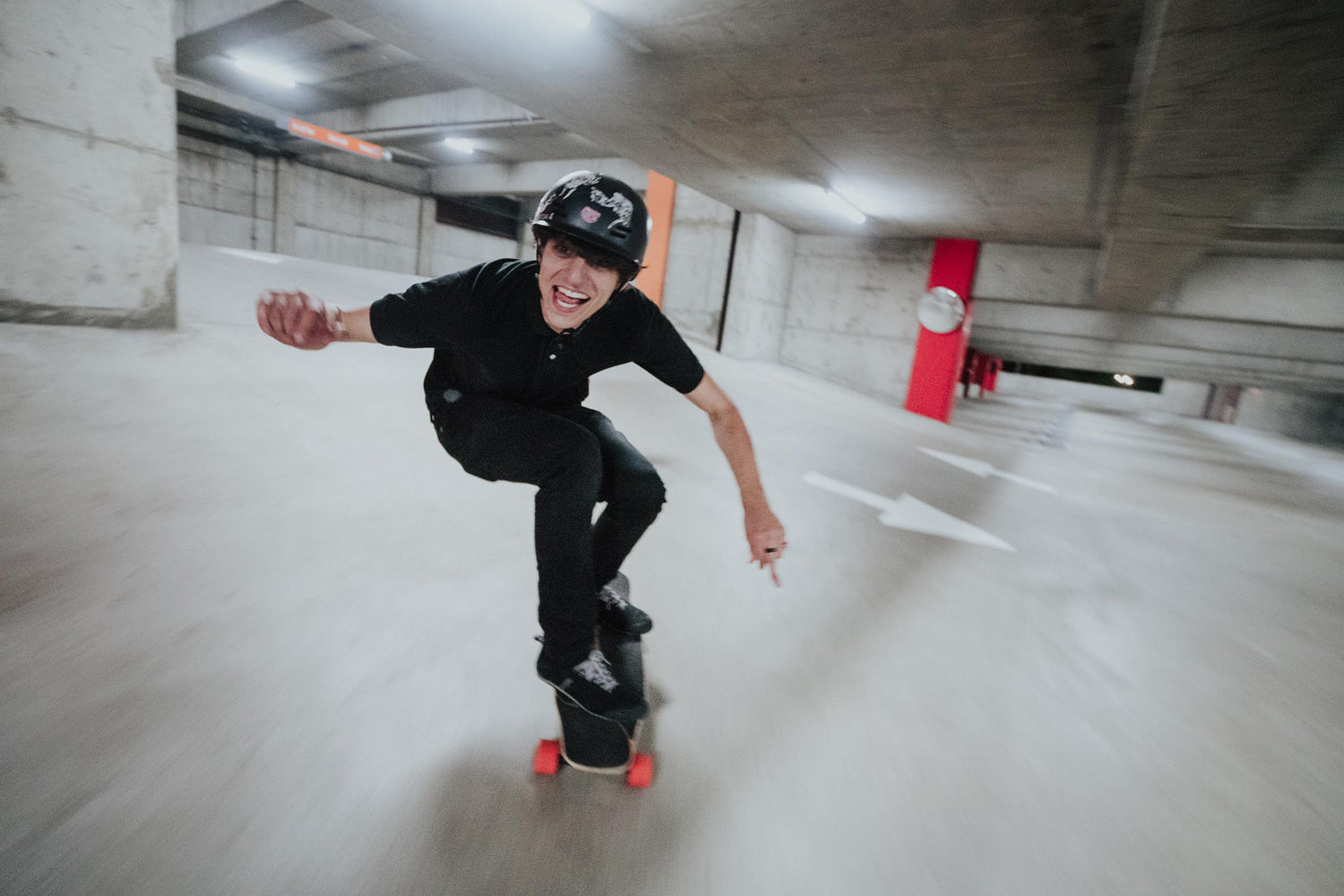When you look at the progression of downhill longboarding in recent history, Rayne Longboards is bound to be a part of the conversation. Whether through the dozens of podiums that Founder, Graham Buksa, and his riders have summited or through technological breakthroughs including the creation of the first bamboo fiberglass downhill board, Rayne has become synonymous with quality, progression and authenticity.
To find out bit more about his initial motivations, challenges to find the right materials and plans for the future, we got Buksa on the phone for the inside scoop.
The Learning Curve
In 2004, Graham Buksa was not only learning the best practices of board development, he was figuring out how to conquer downhill longboarding itself. Unlike companies founded after years of riding experience, Buksa built both his company and his comfort on the board from the ground up. Naturally, this relationship opened up close ties for the research and development of the operation. As Buksa put it, “Timing wise, we were on the learning curve of people developing skills within the industry. As we were out riding, we were learning and putting everything we were learning right into the boards.”
At the same time, the support from the growing North Vancouver scene helped the boards take shape as riding styles matured. The influence of other riders in the area is another important aspect that Buksa credited to the success of Rayne by recalling times like “watching Kevin Reimer bust out predrifts for the first time and then taking them to Europe to demolish the World Cup. We had that inside scoop on what was going on.”
The Formula
As far as the materials that Rayne has become known for, their hallmark combination of bamboo and fiberglass has stood the test of time as their standard for superior performance. (Need proof? Have a look at the Rayne Whip)
Rayne’s history with fiberglass stems from Buksa’s early interest and experience working with snowboarding and ski equipment. Driven by a vision that fiberglass was the best choice to create a durable, high quality deck, he was met with challenges in finding the right manufacturer that was willing work through difficulties of shaping a fiberglass deck. Unwilling to accept any substitutes in this department, he eventually found a solution and went on to find the best wood to pair with.
In turn, Rayne’s history with bamboo stems from the struggle that Buksa faced when trying to build Rayne’s earliest maple decks with a combination of glue and epoxy. In an effort to simplify the process, he made the decision to switch materials completely and start using bamboo wood. With a lightweight blend of unmatched strength and controllable flex, this wood proved to be the right compliment to the fiberglass.
As such, the first bamboo fiberglass downhill longboard was introduced and has remained the material of choice, despite numerous considerations to change the formula over the years. With this part of the equation settled, Buksa and the Rayne team have focused their efforts on reprioritizing and preparing for the future.
The Right Path
With over a decade in the books, Rayne has risen to the top of the longboarding game in more ways than one. In an effort to reciprocate and support the longboarding industry, they recently made the decision to move their manufacturing to Seattle area, through Origin Distribution, while keeping core management back in Vancouver. In doing so, Buksa expressed relief to be able to step away from manufacturing mindset and be able to focus on design at a more leisurely pace.
Other initiatives that Rayne is in the process of pursuing include simplifying their product line as appropriate and developing a balance between premium and price point boards. At a time when newcomers and enthusiasts alike are confronted with more options than ever before, Buksa remains aware of the need to clarify certain specifications of their products. As he reflected on the dynamic, he explained how, “there’s people that need good design with sufficient materials and then there’s people who need good design with excellent materials… sometimes you’re missing the mark just because you’re not reaching the right customer who won’t ever appreciate the materials you’re putting into it because they don’t have the knowledge to.”

Ultimately, the goal for Rayne going forward is to focus on the storytelling of products. Recognizing their place in a world where consumers have been bombarded with new features and technologies year after year, Buksa articulated, “When the industry was really young, you didn’t have to do much storytelling for a product. It was simply different. You could make something new and if it had a new feature that hadn’t been out on the market before, it was pretty easy to illustrate what the difference was. I think the industry itself has matured so much and we’ve all seen so much difference that how refined a product can be, the experience that you put into it and that patience that you put into a product is what hopefully will shine at the end of the day.”
While anyone can find a cheap longboard online, only those with an appreciation for years of craftsmanship can take pride in riding something like the Rayne Darkside.







